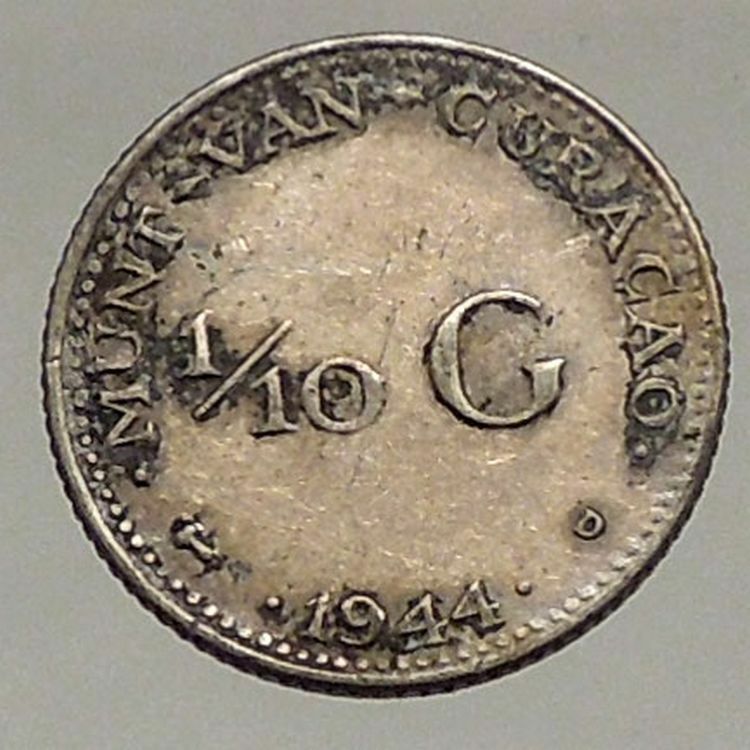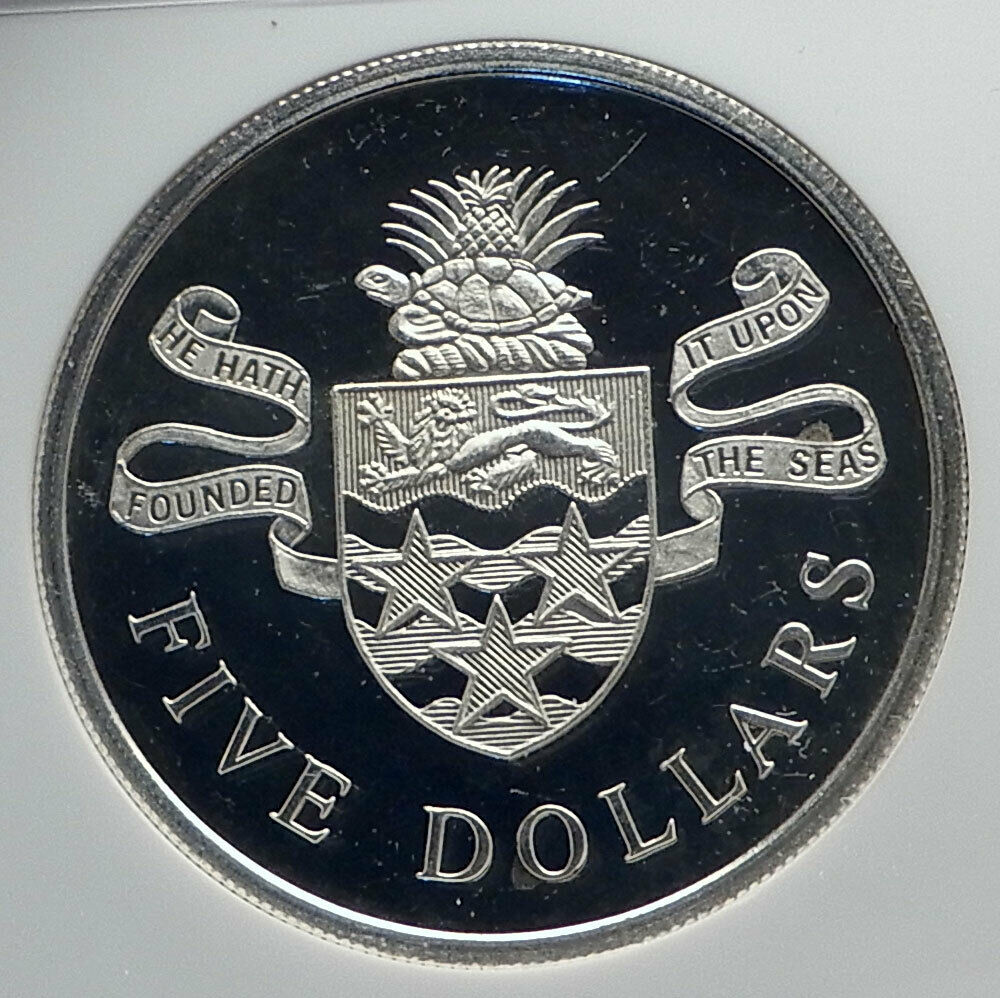|
Turks & Caicos Islands
Coronation of 1937
1997 Proof Silver 20 Crowns 38.6mm (31.23 grams) 0.999 Silver (1.00 oz. ASW)
Reference: N# 57967
ELIZABETH II-TURKS AND CAICOS ISLANDS 1997 -20 CROWNS, Bust of Elizabeth II to right, date at left.
LADY OF THE CENTURY 1937 CORONATION, George and Elizabeth facing right.
You are bidding on the exact item pictured, provided with a Certificate of Authenticity and Lifetime Guarantee of Authenticity.
 The coronation of George VI and his wife Elizabeth as king and queen of the United Kingdom and the Dominions of the British Commonwealth, and as emperor and empress of India took place at Westminster Abbey, London, on 12 May 1937. George VI ascended the throne upon the abdication of his brother, Edward VIII, on 11 December 1936, three days before his 41st birthday. Edward’s coronation had been planned for 12 May and it was decided to continue with his brother and sister-in-law’s coronation on the same date. The coronation of George VI and his wife Elizabeth as king and queen of the United Kingdom and the Dominions of the British Commonwealth, and as emperor and empress of India took place at Westminster Abbey, London, on 12 May 1937. George VI ascended the throne upon the abdication of his brother, Edward VIII, on 11 December 1936, three days before his 41st birthday. Edward’s coronation had been planned for 12 May and it was decided to continue with his brother and sister-in-law’s coronation on the same date.
Although the music included a range of new anthems and the ceremony underwent some alterations to include the Dominions, it remained a largely conservative affair and closely followed the ceremonial of George V’s coronation in 1911. The ceremony began with the anointing of the King, symbolizing his spiritual entry into kingship, and then his crowning and enthronement, representing his assumption of temporal powers and responsibilities. The peers of the realm then paid homage to the King before a shorter and simpler ceremony was conducted for the Queen’s coronation. The return procession to Buckingham Palace was over six miles (9.7 km) in length, making it the longest coronation procession up to that time; crowds of people lined the streets to watch it, over 32,000 soldiers took part and 20,000 police officers lined the route. The coronation was commemorated by the issuing of official medals, coinage, and stamps, by military parades across the Empire, and by numerous unofficial celebrations, including street parties and the production of memorabilia.
The event was designed to be not only a sacred anointing and formal crowning, but also a public spectacle, which was also planned as a display of the British Empire. May 1937 included a programme of royal events lasting nearly the entire month to commemorate and mark the occasion. As a preliminary to the coronation, guests from across the Empire and around the world assembled at Buckingham Palace and official receptions were held to welcome them; amongst those attending were Indian princes and, for the first time, native African royalty. For the event itself, the prime ministers of each Dominion took part in the procession to the abbey, while representatives of nearly every country attended. Contingents from most colonies and each Dominion participated in the return procession through London’s streets.
The media played an important part in broadcasting this show of pageantry and imperialism to the Empire. The coronation was an important event in the history of television, being the country’s first major outside broadcast, although television cameras were not allowed inside the abbey. It was also the first coronation to be filmed, as well as the first to be broadcast on radio.
 The Turks and Caicos Islands, or TCI for short, are a British Overseas Territory consisting of the larger Caicos Islands and smaller Turks Islands, two groups of tropical islands in the Lucayan Archipelago of the Atlantic Ocean and northern West Indies. They are known primarily for tourism and as an offshore financial centre. The resident population is 31,458 as of 2012 of whom 23,769 live on Providenciales in the Caicos Islands. The Turks and Caicos Islands, or TCI for short, are a British Overseas Territory consisting of the larger Caicos Islands and smaller Turks Islands, two groups of tropical islands in the Lucayan Archipelago of the Atlantic Ocean and northern West Indies. They are known primarily for tourism and as an offshore financial centre. The resident population is 31,458 as of 2012 of whom 23,769 live on Providenciales in the Caicos Islands.
 The Turks and Caicos Islands lie southeast of Mayaguana in the Bahamas island chain and north of the island of Hispaniola (Haiti and the Dominican Republic) and the other Antilles archipelago islands. Cockburn Town, the capital since 1766, is situated on Grand Turk Island about 1,042 kilometres (647 mi) east-southeast of Miami, United States. The islands have a total land area of 430 square kilometres (170 sq mi). The Turks and Caicos Islands lie southeast of Mayaguana in the Bahamas island chain and north of the island of Hispaniola (Haiti and the Dominican Republic) and the other Antilles archipelago islands. Cockburn Town, the capital since 1766, is situated on Grand Turk Island about 1,042 kilometres (647 mi) east-southeast of Miami, United States. The islands have a total land area of 430 square kilometres (170 sq mi).
.svg/250px-Turks_and_Caicos_Islands_in_United_Kingdom_(special_marker).svg.png) The first recorded European sighting of the islands now known as the Turks and Caicos occurred in 1512. In the subsequent centuries, the islands were claimed by several European powers with the British Empire eventually gaining control. For many years the islands were governed indirectly through Bermuda, the Bahamas, and Jamaica. When the Bahamas gained independence in 1973, the islands received their own governor, and have remained a separate autonomous British Overseas Territory since. The first recorded European sighting of the islands now known as the Turks and Caicos occurred in 1512. In the subsequent centuries, the islands were claimed by several European powers with the British Empire eventually gaining control. For many years the islands were governed indirectly through Bermuda, the Bahamas, and Jamaica. When the Bahamas gained independence in 1973, the islands received their own governor, and have remained a separate autonomous British Overseas Territory since.
|





 The coronation of George VI and his wife Elizabeth as king and queen of the United Kingdom and the Dominions of the British Commonwealth, and as emperor and empress of India took place at Westminster Abbey, London, on 12 May 1937. George VI ascended the throne upon the abdication of his brother, Edward VIII, on 11 December 1936, three days before his 41st birthday. Edward’s coronation had been planned for 12 May and it was decided to continue with his brother and sister-in-law’s coronation on the same date.
The coronation of George VI and his wife Elizabeth as king and queen of the United Kingdom and the Dominions of the British Commonwealth, and as emperor and empress of India took place at Westminster Abbey, London, on 12 May 1937. George VI ascended the throne upon the abdication of his brother, Edward VIII, on 11 December 1936, three days before his 41st birthday. Edward’s coronation had been planned for 12 May and it was decided to continue with his brother and sister-in-law’s coronation on the same date. The Turks and Caicos Islands, or TCI for short, are a British Overseas Territory consisting of the larger Caicos Islands and smaller Turks Islands, two groups of tropical islands in the Lucayan Archipelago of the Atlantic Ocean and northern West Indies. They are known primarily for tourism and as an offshore financial centre. The resident population is 31,458 as of 2012 of whom 23,769 live on Providenciales in the Caicos Islands.
The Turks and Caicos Islands, or TCI for short, are a British Overseas Territory consisting of the larger Caicos Islands and smaller Turks Islands, two groups of tropical islands in the Lucayan Archipelago of the Atlantic Ocean and northern West Indies. They are known primarily for tourism and as an offshore financial centre. The resident population is 31,458 as of 2012 of whom 23,769 live on Providenciales in the Caicos Islands.  The Turks and Caicos Islands lie southeast of Mayaguana in the Bahamas island chain and north of the island of Hispaniola (Haiti and the Dominican Republic) and the other Antilles archipelago islands. Cockburn Town, the capital since 1766, is situated on Grand Turk Island about 1,042 kilometres (647 mi) east-southeast of Miami, United States. The islands have a total land area of 430 square kilometres (170 sq mi).
The Turks and Caicos Islands lie southeast of Mayaguana in the Bahamas island chain and north of the island of Hispaniola (Haiti and the Dominican Republic) and the other Antilles archipelago islands. Cockburn Town, the capital since 1766, is situated on Grand Turk Island about 1,042 kilometres (647 mi) east-southeast of Miami, United States. The islands have a total land area of 430 square kilometres (170 sq mi). .svg/250px-Turks_and_Caicos_Islands_in_United_Kingdom_(special_marker).svg.png) The first recorded European sighting of the islands now known as the Turks and Caicos occurred in 1512. In the subsequent centuries, the islands were claimed by several European powers with the British Empire eventually gaining control. For many years the islands were governed indirectly through Bermuda, the Bahamas, and Jamaica. When the Bahamas gained independence in 1973, the islands received their own governor, and have remained a separate autonomous British Overseas Territory since.
The first recorded European sighting of the islands now known as the Turks and Caicos occurred in 1512. In the subsequent centuries, the islands were claimed by several European powers with the British Empire eventually gaining control. For many years the islands were governed indirectly through Bermuda, the Bahamas, and Jamaica. When the Bahamas gained independence in 1973, the islands received their own governor, and have remained a separate autonomous British Overseas Territory since. 




